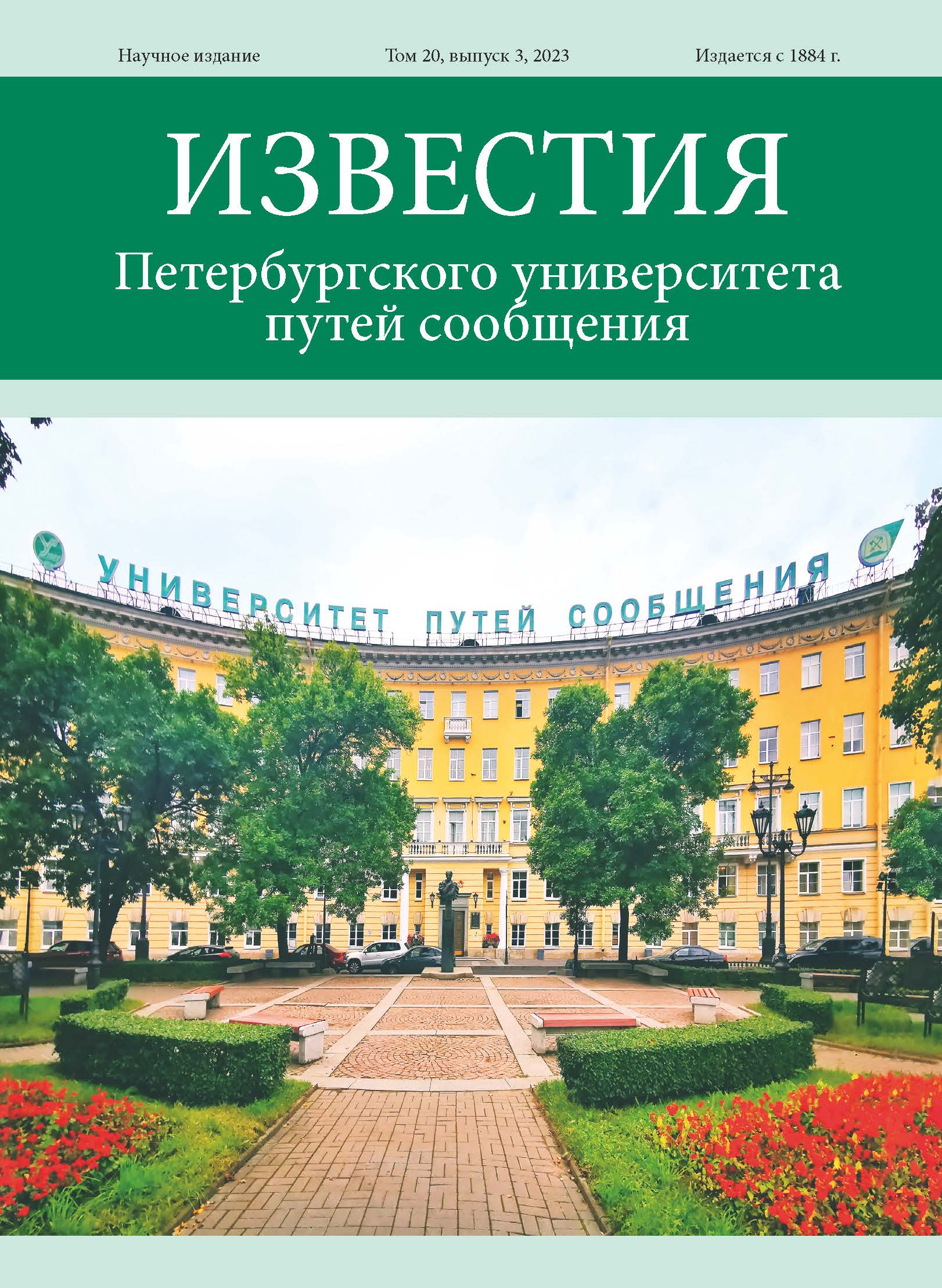Russian Federation
Purpose: To analyze greenhouse gas emissions from the BRICS countries, as well as ways to reduce emissions from rail transport. Methods: The contribution of the BRICS countries to global greenhouse gas emissions based on an array of statistical data for the period from 1990 to 2019 has been estimated. The value of CO2 emissions per unit of energy produced in the BRICS countries from 1965 to 2021, as well as the sources of CO2 emissions, have been determined. Results: It is shown that the most effective way to combat climate change is to directly reduce emissions. In general, the emissions of the railway industry depend on the level of electrification. However, when assessing not only direct but also indirect emissions, the energy source and its carbon footprint become of primary importance. The development of intermodal transportation in BRICS countries is significant because these routes have the potential to reduce emissions. Carbon regulation leads to a redistribution in the sphere of international freight transportation among BRICS countries. Competitive advantages are increasingly evident in the railway transportation sector. However, this effect depends on the measures taken to adapt to changes in the transportation market by other modes of transportation. Practical significance: Ways to improve the sustainability of transport infrastructure have been formulated. The lowcarbon transport industry in the BRICS countries can be seen as an important component in reducing gross greenhouse gas emissions given the current high level of reliance on fossil carbon fuels and the inertia driven by the long life of fossil fuel infrastructure. Without the use of negative emission technologies, the required costs for reducing greenhouse gas emissions can be 40 % higher than with the use of negative emission technologies. As part of the reduction of greenhouse gas emissions by railway transport facilities in the BRICS countries, the following measures can be implemented: direct reduction of greenhouse gas emissions; introduction and implementation of technologies for negative emissions at railway transport facilities, taking into account their geospatial distribution and their specific characteristics; attracting investments and ensuring access to more affordable financing for these projects; integration of climate change mitigation issues into the strategies of transportation companies; further electrification in transportation and transitioning to alternative fuel sources; utilization of digital technologies to optimize transportation systems and reduce the environmental impact of the railway industry.
Global warming, sustainable development, railway industry, climate change, low-carbon transport industry, carbon dioxide emissions, negative emission technologies
1. Titova T. Methodical approaches for durability assessment of engineering structures in cold regions / T. Titova, R. Akhtyamov, E. Nasyrova // Lecture Notes in Civil Engineering. - 2020. - Iss. 49. - Pp. 473-478. - DOI:https://doi.org/10.1007/978-981-15-0450-1_49/.
2. Bardyshev O. A. Monitoring of technical condition of technical devices at hazardous production facilities / O. A. Bardyshev, V. A. Popov, S. K. Korovin et al. // Bezopasnost' truda v promyshlennosti. - 2020. - Iss. 1. - Pp. 52-56. - DOI:https://doi.org/10.24000/0409-2961-2020-1-52-56.
3. Baydarashvili M. Conservation of mineral resources in transport and civil construction / M. Baydarashvili, A. Sakharova, N. Shrednik et al. // Lecture Notes in Civil Engineering. - 2020. - Iss. 50. - Pp. 479-486. - DOI:https://doi.org/10.1007/978-981-15-0454-9_50.
4. Nasyrova E. Geoenvironmental assessment of urban water bodies / E. Nasyrova, A. Elizaryev, S. Aksenov et al. // E3S Web of Conferences. - 2019. - Vol. 110, № 02045. - DOI:https://doi.org/10.1051/e3sconf/201911002045.
5. Ulyasheva V. M. Increasing the efficiency of methods for cleaning of ventilation emissions at construction enterprises / V. M. Ulyasheva, A. M. Grimitlin, N. A. Shernikov // Water and Ecology. - 2018. - Iss. 4. - Pp. 92-97. - DOI:https://doi.org/10.23968/2305-3488.2018.23.4.92-98.
6. Miloslavskaya S. Intermodal transportation using inland water transport in Russia and abroad / S. Miloslavskaya, A. Panychev, A. Myskina et al. // IOP Conference Series: Materials Science and Engineering. - 2019. - Vol. 698(6), № 066059. - DOI:https://doi.org/10.1088/1757-899X/698/6/066059.
7. Bryn M. J. Geodetic Monitoring of Deformation of Building Surrounding an Underground Construction / M. J. Bryn, D. A. Afonin, N. N. Bogomolova // Procedia Engineering. - 2017. - Iss. 189. - Pp. 386-392. - DOI:https://doi.org/10.1016/j.proeng.2017.05.061.
8. Baydarashvili M. Criteria of Geoecoprotection in Construction / M. Baydarashvili // Procedia Engineering. - 2017. - Iss. 189. - Pp. 616-621. - DOI:https://doi.org/10.1016/j.proeng.2017.05.098.
9. Terekhov L. D. Experimental study of soil thawing around shallow sewage pipelines in winter / L. D. Terekhov, S. B. Mayny, N. A. Shernikov // Water and Ecology. - 2019. - Iss. 24(4). - Pp. 71-78. - DOI:https://doi.org/10.23968/2305-3488.2019.24.4.71-78.
10. Titova T. Accident at river-crossing underwater oil pipeline / T. Titova, R. Akhtyamov, E. Nasyrova et al. // MATEC Web of Conferences. - 2018. - Iss. 239, № 06003. - DOI:https://doi.org/10.1051/matecconf/201823906003.
11. Uzdin A. M. On the Reliability of Finite-Element Evaluation of the Dynamic Interaction of a Structure with the Base / A. M. Uzdin, M. V. Freze, M. Y. Fedorova // Soil Mechanics and Foundation Engineering. - 2018. - Iss. 55(3). - Pp. 201-208. - DOI:https://doi.org/10.1007/s11204-018-9526-0.
12. Ershova S. Study of Life Quality and Urban Environment Quality in Russian Megapolises / S. Ershova, T. Orlovskaya, E. Panfilova // IOP Conference Series: Materials Science and Engineering. - 2018. - Iss. 463(4), № 042040. - DOI:https://doi.org/10.1088/1757-899X/463/4/042040.
13. Dudkina O. I. On the Strong Law of Large Numbers for Linear Combinations of Concomitants / O. I. Dudkina, N. V. Gribkova // Vestnik St. Petersburg University: Mathematics. - 2020. - Iss. 53(3). - Pp. 282-286. - DOI:https://doi.org/10.1134/S1063454120030061.
14. Kolos A. The effect of different additives on the swelling process of heavy clays / A. Kolos, V. Alpysova, G. Osipov // Lecture Notes in Civil Engineering. - 2020. - Iss. 50. - Pp. 295-306. - DOI:https://doi.org/10.1007/978-981-15-0454-9_31.
15. Vvedenskij R. V. Environmental impact of the tunnel construction / R. V. Vvedenskij, S. G. Gendler, T. S. Titova // Magazine of Civil Engineering. - 2018. - Iss. 79(3). - Pp. 140-149. - DOI:https://doi.org/10.18720/MCE.79.15.
16. CO2 and Greenhouse Gas Emissions Country Profiles. - URL: https://ourworldindata.org/co2-and-other-greenhouse-gas-emissions#co2-and-greenhouse-gas-emissions-country-profiles (data obrascheniya: 08.03.2023).









